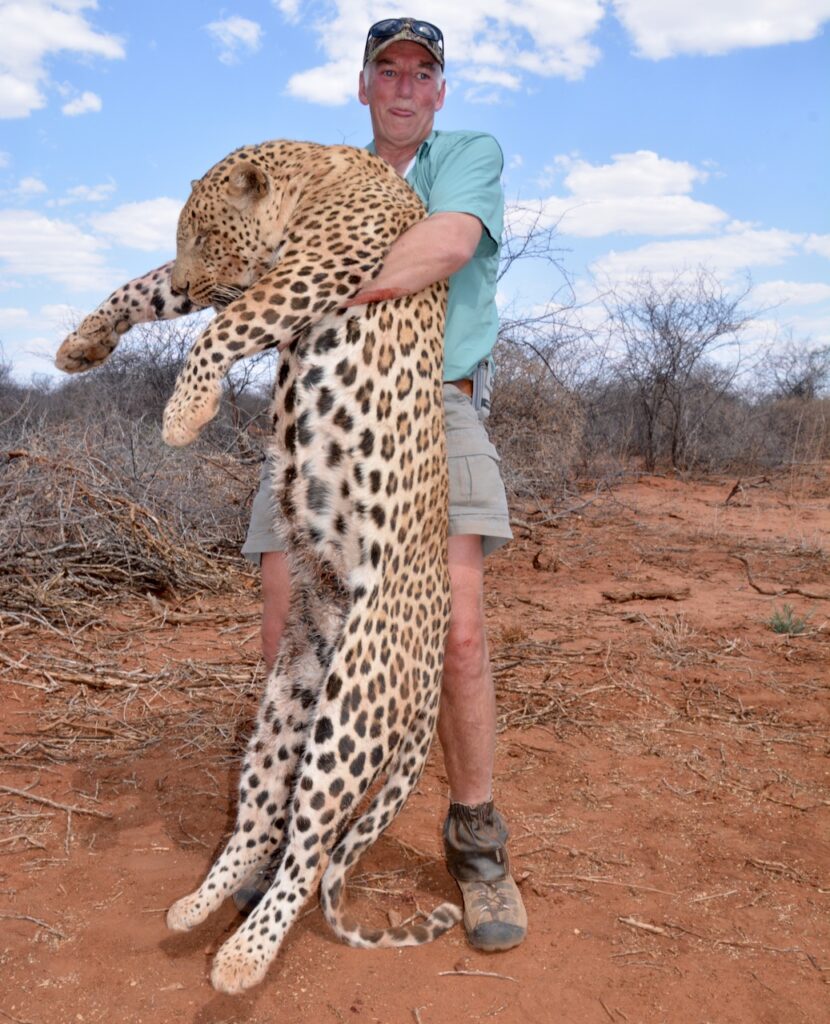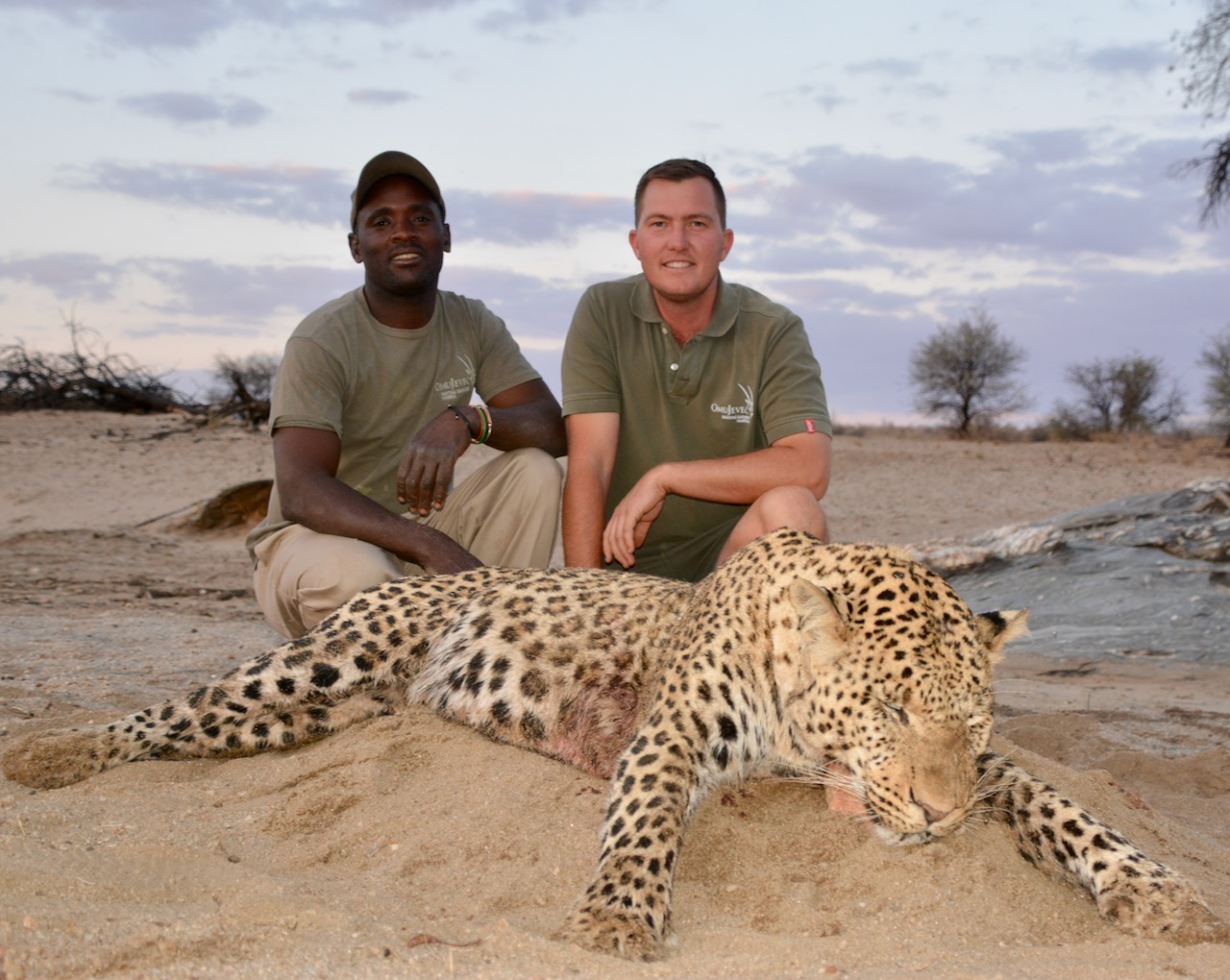A MOST DANGEROUS HUNT
Somewhere in the dense brush of the harsh Namibian landscape, a wounded leopard lurks. Failing to finish the job is not an option
Advertisement

By 6:30 a.m. we were back at the bait site, where the landowner joined us with his .416 Rigby and his beagle. While hunting leopards with dogs is prohibited, it’s still legal—and wise—to use canine assistance to track wounded cats. Just 30 metres from the bait, we found droplets in the sand that didn’t appear to be blood. Ockert, Kabila and the landowner quietly spoke to one another in Afrikaans, then Ockert turned to me. “We think he’s been gut shot.”
At those words, I felt nearly sick to my stomach. There is simply no animal as dangerous as a wounded leopard, and one that’s been gut shot is the worst of the lot—he’s hurt, mad as hell and has four working claws and a maw that’s just itching to sink two-inch-long canines into your flesh. I wasn’t feeling nauseated due to fear, however, but because of extreme guilt for putting everyone present in a potentially life-threatening position.
Advertisement
Unlike some dangerous game, wounded leopards will quietly charge from close range, and more quickly than you can blink
When PHs are surveyed about Africa’s most dangerous game, leopards are usually ranked fourth behind the lion, elephant and Cape buffalo. When wounded, however, they climb to the top of the list. Unlike some dangerous game, wounded leopards will quietly charge from close range, and more quickly than you can blink. They’re not as likely to kill you as some other dangerous game, but they’ll definitely leave marks you’ll regret for the rest of your life.
Knowing this, all we could do was carry on with guns at the ready, exercising extreme caution. We slowly tracked through the dense thorny understory, often on our hands and knees, unable to see more than a few metres in any direction. About 50 metres on, we found a pool of dried blood where the big tom had laid down during the night. Fifty metres further along, we found where he’d rested a second time.
We carefully pushed on, with the beagle working through the thorns ahead of us. At one point, we heard the dog briefly bay. Working cautiously forward, we arrived at a pool of fresh blood oozing across the sand; clearly the dog had bumped the leopard. This discovery only heightened the spookiness factor—the tom was obviously very close, but the cover was so thick we’d have little chance to swing our rifles, much less shoot, if he decided to come at us. There was little choice but to back out and reconsider our options.
Advertisement
After a brief discussion, we decided the smart play was to bring in trained hounds belonging to a nearby landowner. Otherwise, continuing to pursue the leopard through the dense thorn brush would undoubtedly result in a charge, guaranteeing that one or more of us would get torn up.

When the hounds and their handler arrived, we got back on the spoor. We knew the cat wasn’t far, and within 10 minutes we heard the baying that signalled he had been treed. Sure enough, the big tom had climbed a tree to get away from the hounds, and that’s where I finished the job. It was, fortunately, a somewhat anti-climactic and decisive end. I began to breathe normally again for the first time since the previous evening, relieved we’d sorted it all out without anyone suffering so much as a scratch.
When all was done and dusted, the great cat wasn’t more than a couple hundred metres from the bait site. He turned out to be an older tom—an estimated 10 years old—and a broken canine revealed he’d seen his fair share of tough days. He measured seven feet three inches from his nose to the tip of his tail, and weighed in at just over 140 pounds, an above-average leopard by any standard. He had a massive head, neck and shoulders, but was a little lean through the body, suggesting his overall condition was on the decline.
Skinning the leopard revealed I’d shot him just behind the shoulder, but a bit low, smashing his sternum. The bullet and bone fragments had damaged his lungs, so he couldn’t, and wouldn’t, have travelled very far. In fact, if my shot had been as little as two inches higher, he’d have died at the bait. Two inches doesn’t mean much when shooting plains game, but on dangerous game it can make a huge difference.
All’s well that ends well, they say, and that was certainly the case on my leopard hunt. Remember how I said that the night following the shot was the longest of my life? I stand corrected. The longest night of my life was the night after we got back to the lodge with the old tom in tow. I was down for nine straight hours and enjoyed the sleep of angels knowing my leopard was in the salt.
To learn more about Omujeve Hunting Safaris, please visit www.omujevehuntingsafaris.com.

